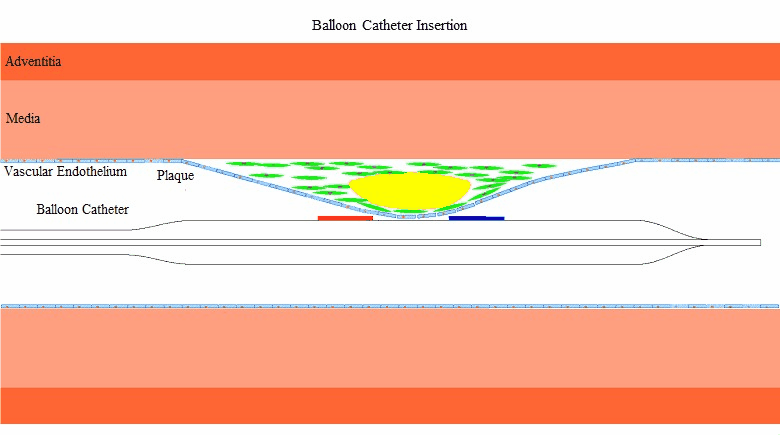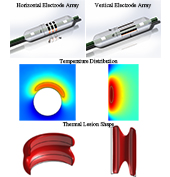
Atherosclerosis contributes to major mortality and modality of cardiovascular diseases around the world. Angioplasty and stenting are the common treatments for blocked arteries induced by atherosclerosis in clinic. In the treatment, the narrowed artery lumen is effectively opened by the dilation of balloon and stents, which allows sufficient blood transport to resume. However, several months later, re-narrowing of the artery, or restenosis, would frequently occur. Though the drug-releasing in DES reduces the restenosis rate, the side effect from a long-term use of the drugs such as stents thrombosis, still remains a big concern. The mechanisms causing restenosis are believed to be closely related to endothelial injury and proliferation of the smooth muscle cell consisting the vascular wall.
In this study, a new RF heating strategy has been proposed to selectively ablate the atherosclerosis plaque which offers the possibility of thermally inhibiting the proliferation of smooth muscle cells, while keeping the vascular endothelium intact. A RF balloon is designed by integrating distributed micro-electrodes on the balloon surface with internal cooling agent flowing over the endothelial layer and result in a conformal heating of the plaque.
The heating capacity of the design for different plaque geometries are evaluated with a 3D numerical model. With the experimentally fitted parameter, it is found that by the individual control of the micro-electrodes, special shapes of the lesions can be formed, to conform to the eccentric crescent plaques. Besides, through individually regulating the polarity of the electrodes, separate lesions in the artery can be created, suggesting the possibility for treatment of disconnected plaques in situ. By control of the RF heating power and the convection of the internal cooling agent, a targeted heating region away from vascular endothelium can be realized. With its further development, a precision thermal treatment of atherosclerosis resistive to restenosis may be realized.

